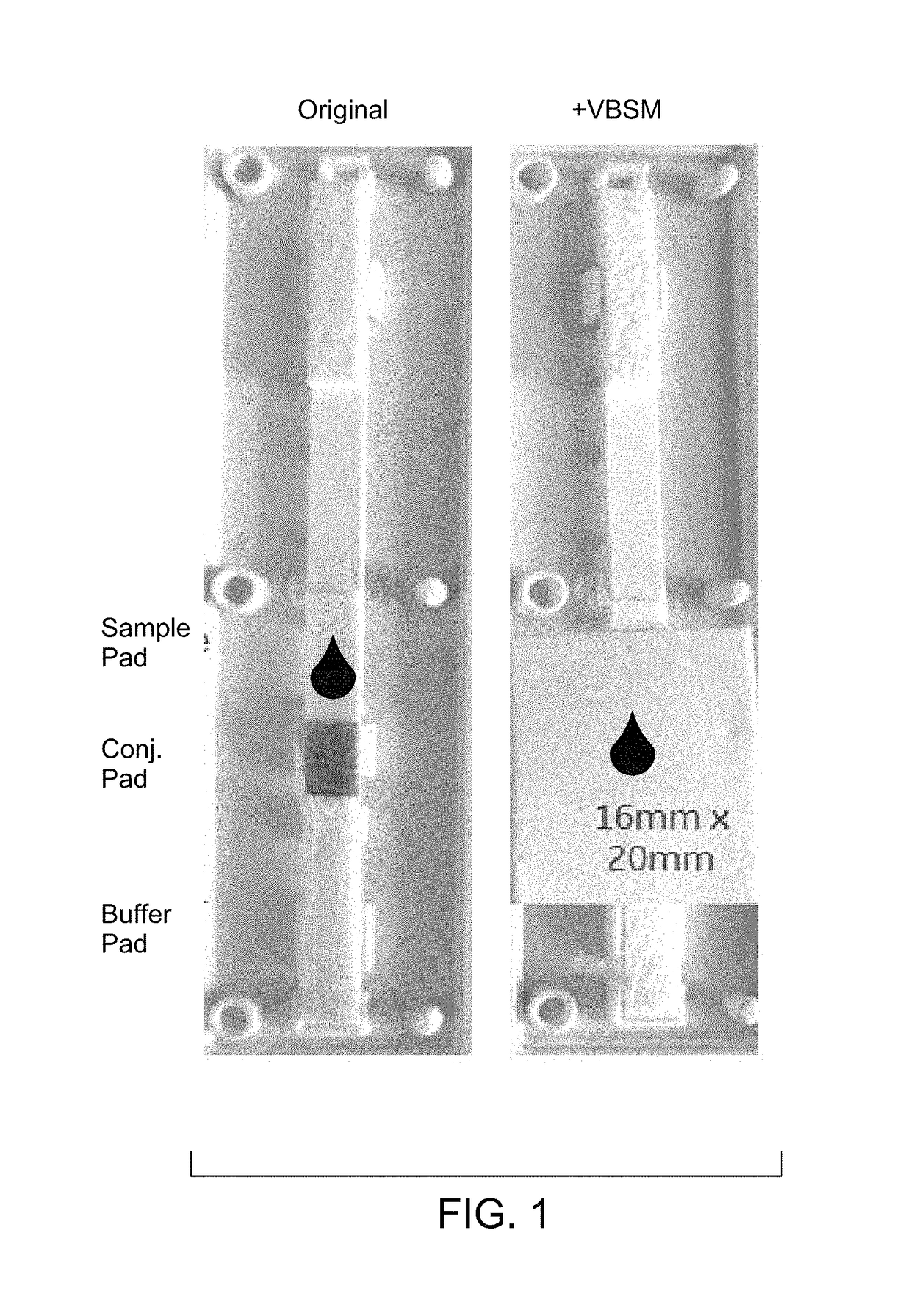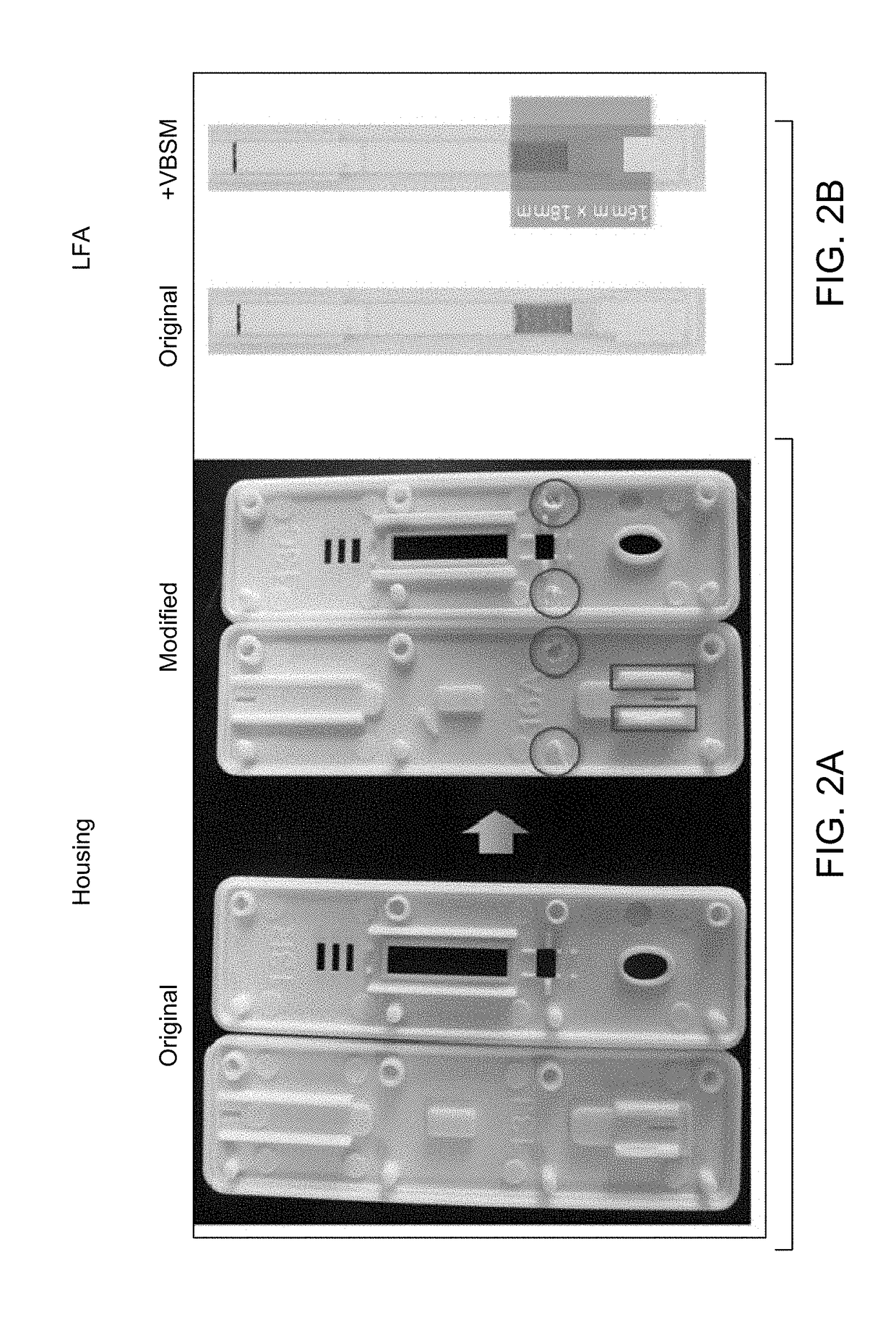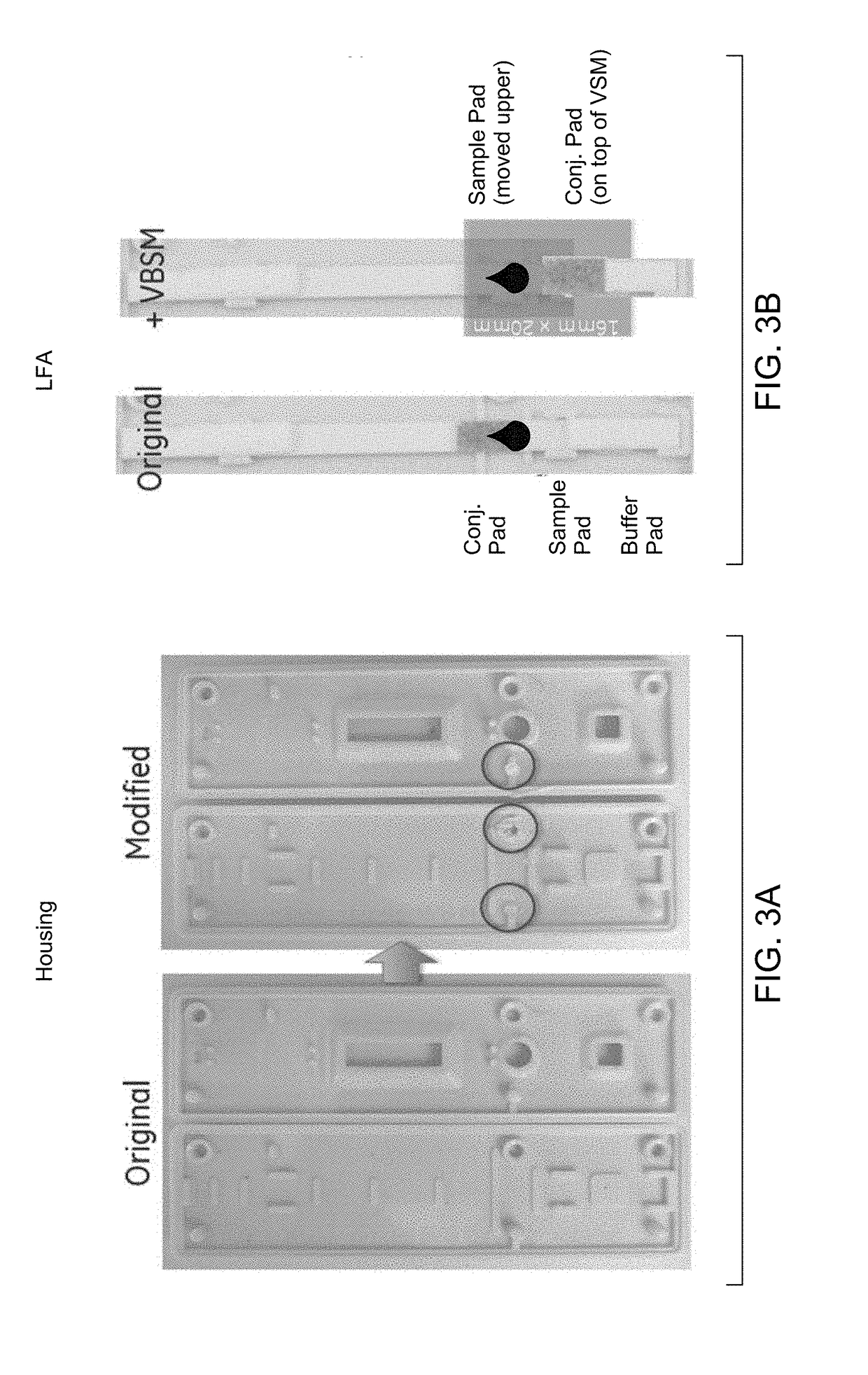Integration of sample separation with rapid diagnostic tests for improved sensitivity
a sample separation and rapid diagnostic technology, applied in the field of malaria rdts, can solve the problems of increasing the number of steps required for the assay, affecting the detection performance (sensitivity) of the test kit, false negative test, etc., and achieves the effect of improving the lateral flow assay rdt, improving the rdt, and reducing interferen
- Summary
- Abstract
- Description
- Claims
- Application Information
AI Technical Summary
Benefits of technology
Problems solved by technology
Method used
Image
Examples
example 1
on of Vertical Channeled Construct with RDTs
1) Ctk
[0071]Materials: CTK HRP2 device RDT (R0114C); Vertical blood separation membrane (VBSM) (asymmetric polysulfone).
[0072]Cut the asymmetric membrane into dimensions of 16 mm×20 mm. Open the CTK housing. Place the membrane on the CTK strip (shiny side facing down), covering sample, conjugate, and part of buffer pads as shown in FIG. 1. Close the CTK housing, or leave it open if being tested shortly.
2) CareStart
[0073]Materials: CareStart device; Vertical blood separation membrane (VBSM) (asymmetric polysulfone).
[0074]Cut the asymmetric membrane into dimensions of 16 mm×18 mm; Open CareStart housing; Modify housing: remove the second pair of pin point and hole from both the top and bottom plastics, as circled in FIG. 2A; Carefully peel off the buffer pad from conjugate pad, without completely detaching the backing; cut off 5 mm from the upper position. Place VBSM on top of LFA (shiny side facing down), covering conjugate pad, and lay the...
example 2
on of Lateral Channeled Construct with RDTs
1) CTK / SD Bioline
[0083]Materials: CTK / SD Bioline device; lateral blood separation membrane (LBSM) (LF1 from GE).
[0084]Cut the membrane into dimensions of 40 mm×10 mm (L-shape); Open the housing; Place LBSM on the side of the LFA test strip and the leg (10 mm) of the LF1 material touching the middle of conjugate pad, and part of buffer pads (FIG. 7); Close the housing.
Test Procedure
[0085]HRP2 stock aliquots was stored under −80° C.; Prepare HRP2 dilutions in CPD human whole blood at desired concentrations, and store on ice;
[0086]For modified RDTs: Add 75 ul blood sample onto the LBSM at the far end. Allow time for plasma to flow to the conjugate pad and blood to remain on the IBSM. For larger sample volumes, scale LBSM accordingly. Chase with 100 ul non-lytic buffer through buffer port. Cover RDT to minimize evaporation from nitrocellulose. Wait and read results after 20 minutes.
[0087]For regular RDTs as control: Add 5 ul blood sample throug...
example 3
Sensitivity of Integrated Devices
[0089]Materials: CTK HRP2 device RDT (R0114C); Experimental cellulose nanobeads (CNB) device for HRP2; Vertical blood separation membrane (VBSM) (asymmetric polysulfone).
[0090]In this configuration, the original CTK conjugate particle pad is replaced with a cellulose nanobead conjugate pad, and the housing remains the same as original CTK.
[0091]Cut VBSM into dimensions of 16 mm×20 mm; Open CTK housing. Take off conjugate pad. Replace CTK conjugate with cellulose nanobeads pad. Place VBSM on top of the modified CTK LFA test strip (shiny side facing down), covering sample, conjugate, and part of buffer pads. Close the CTK housing, or leave it open if being tested shortly.
Test Procedure
[0092]Prepare HRP2 (CTK A3005) dilutions in CPD human whole blood (BioReclamation). Open up the housing, add 75 μL blood sample onto center point of the VBSM slowly. Close the housing, and chase with 100 μL non-lytic buffer through buffer port.
[0093]Non lytic buffer 1, fo...
PUM
| Property | Measurement | Unit |
|---|---|---|
| volume | aaaaa | aaaaa |
| pore size | aaaaa | aaaaa |
| pore size | aaaaa | aaaaa |
Abstract
Description
Claims
Application Information
 Login to View More
Login to View More - R&D
- Intellectual Property
- Life Sciences
- Materials
- Tech Scout
- Unparalleled Data Quality
- Higher Quality Content
- 60% Fewer Hallucinations
Browse by: Latest US Patents, China's latest patents, Technical Efficacy Thesaurus, Application Domain, Technology Topic, Popular Technical Reports.
© 2025 PatSnap. All rights reserved.Legal|Privacy policy|Modern Slavery Act Transparency Statement|Sitemap|About US| Contact US: help@patsnap.com



